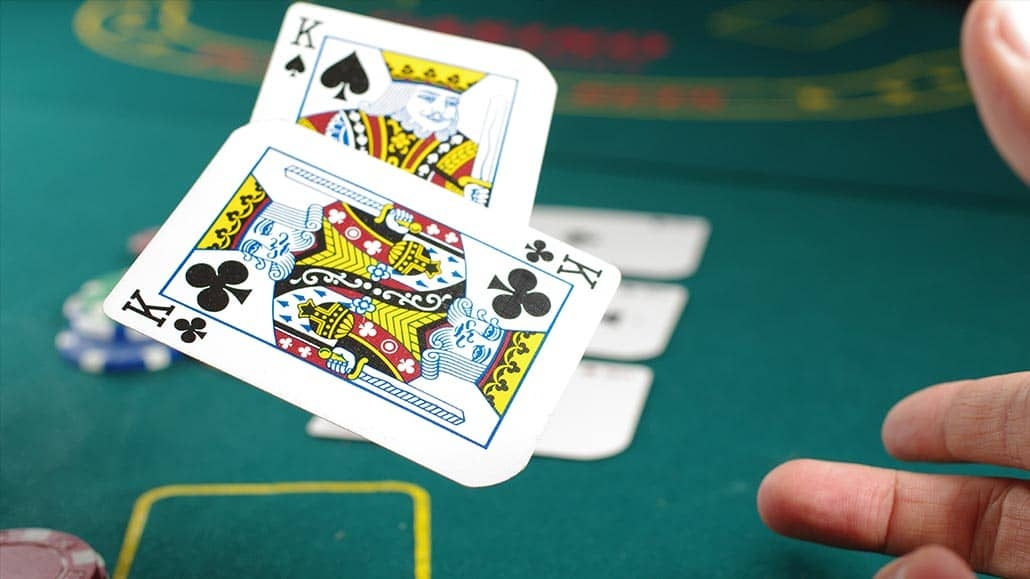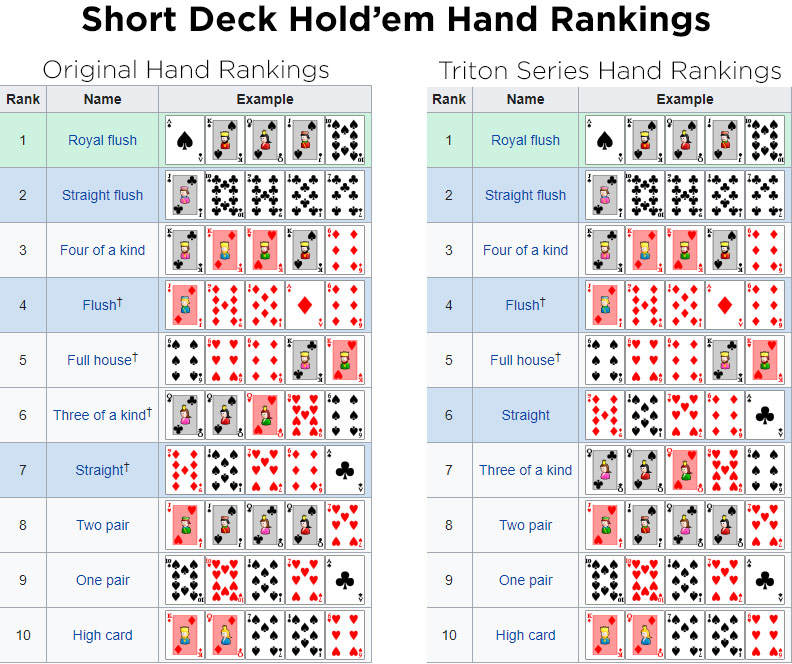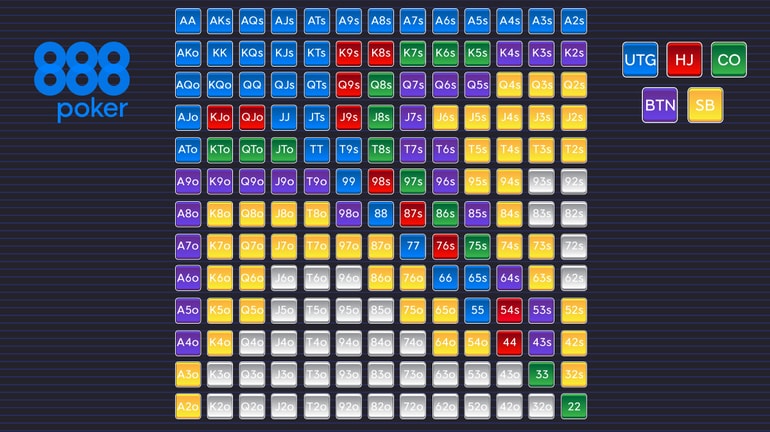Texas Holdem Tournament Strategy
Texas Holdem Tournament Strategy Some of the top professional poker players are able to consistently win while playing both Texas holdem ring games and tournaments. But most players focus on one or the other to maximize their skills and chances for overall profit.
Texas Hold'em Tournament Strategy Tips
Bounty tournaments are exactly like normal poker tournaments, except each player has a bounty on his/her head. This adds an entirely new element to the tournament, because not only do you get rewarded for surviving, but you also are rewarded for ending other players' tournament lives.
When playing bounty tournaments (also called 'knockout tournaments'), players have two choices of strategy: the first choice is to play your normal poker tournament strategy and ignore the bounties, and the other choice is to adjust to the tournament and focus on knocking other players out.
Bounty Tournament Strategy
By understanding the differences between regular and bounty tournaments, you can better understand the correct strategy for knock out tournaments. First of all, the players at the bounty tables will play loose, unlike the type of play you would find at regular style tournaments. Bounty players are playing for the fun of knocking other players out more so than they are practicing good poker skills.
- This is the first in a series of Texas Holdem strategy articles aimed at helping players learn how to win at Texas Hold'em poker. Tournament play is a popular, fun sport. These articles will help.
- Core Components of a Winning Poker Tournament Strategy Let’s get started with the 5 essential elements of an effective poker tournament strategy. These are tips, tricks, and strategies that greenhorns and intermediate-level poker tournament players require to become hardened tournament competitors.
- Texas Hold’em Tournament Strategy: Why Folding Wins The reason “Folding” is the most important Texas Hold’em tournament strategy is because you will only debate folding if you’re not sure. That sums it up right there. Think about it for a minute and it will hit you like a ton of bricks.


Players at these tables typically possess a lower degree of experience and knowledge of poker strategy in general. They place erratic all-in bets and go to showdowns with less than average hands, especially early in the tournament.
As a player in a bounty tournament, you can easily take advantage of this. For example, when you have a short stack, you can make bigger bets and get all in more often with big hands, because there is a greater chance that you'll get called. Replace value bets with over bets, because other players will take a shot to knock you out.
Another difference you can expect to find is that in normal tournament play, players check down a hand often when a small-stacked player is all-in, in order to increase the chances of eliminating that player. On the other hand, in bounty tournaments, the bounty illuminates this play and betting a dry side-pot is more typical. If you're a short stack, avoid all-in bluffs and make sure to get all-in with a solid hand, because it is likely your opponents won't have much and may be bluffing at the side pot.
Ready to Play Bounty Tournaments? Visit FullTiltPoker.com
When small stack players enter the action or the blinds, there will suddenly be many players going after that bounty, which will result in a series of calls or raises by players who do not have the best hands. If you can isolate the small stack or catch a medium stack isolating with a bad hand, you can make a profitable play. Also, don't be this small stacked player - they will undoubtedly be after you next!
You'll also have to play aggressively enough to stay above the majority of chip stacks around the table. When big hands come up, keeping above the chip average will increase your chance of cashing in on a bounty, rather than losing it to another player who has just a few more chips than you.
Like all tournaments, when playing a bounty tournament, your sights should be set on making it to the final table. Knockout tournaments are structured so that 80% of all players' fees go into the standard prize pool. Therefore, the big money is at the final table and reaching this point should be your primary focus.
More Specific Poker Tournament Strategy:
Poker Tournament Strategy
Whether you’re playing micro stakes tournaments or the Sunday Million – you need to know what you’re doing to have a chance at winning. That seems obvious right? But trust me, there are too many players entering tournaments with no clue. That’s great news for you though cos it mean’s poker is not dead, despite what you hear. This article is going to give you poker tournament strategy tips that can be used to increase your cash rate, final tables and wins.
Don’t stop stealing the blinds
Tournament poker regs seem to nit it up and count on making it deep with premium hands. Don’t be one of them. Stay active, keep stealing the blinds from late position and don’t give up. A lot of poker sites are advocating the slow down approach but that’s what your opponents want. Regs are playing too many tables, not paying enough attention and missing profitable spots to steal the blinds. Tournament poker will always reward those who are able to consistently steal blinds and keep their stack alive. The fact that people are defending their blinds loosely should not make you fold more often in late position. Why? You have position. You have the advantage in a hand, even if your hand is weaker. Never forget that.
Pre-flop bet sizing
Consistency is very important when it comes to raising pre-flop. It’s fine if you want to make it 2.5x then stick with that. Please don’t change it based on hand strength. It’s 2020 and even the most basic of poker players will notice and instantly tag you. If you are a poker training video membership member, you’ll know my preference re’ pre-flop bet sizing but I will re-iterate it here non-members.
Early Position Min Raise
When I’m raising from early position, I lack information on the rest of the table. I want to open raise if I play but I also want to steal cheaply and/or keep the pot smaller against my opponents that flat in position. I also have no problem with it folding to the big blind and them calling a min raise. In fact, I welcome it. I will have position, a better hand and have increased the pot a little. My hand range is likely to be stronger than theirs and I have the pre-flop aggression.
Middle Position 2.2x
With fewer opponents behind us, I am happy to increase the sizing a bit and play a slightly bigger pot against the blinds. I don’t want to raise too much as I am still potentially acting first post-flop if someone in position calls. I am also slightly dissuading the blinds to call which is no bad thing in tournaments. I am likely to have a wider range from here so I have no problem with them just folding.
Late Position 2.5x
This may seem counter intuitive to some. Why raise more with a wider range? I want to play bigger pots when I have positional advantage. Sure, sometimes I will be light but sometimes I will be strong too. I want to charge the blinds more than the minimum to play against my wider range. By making it 2.5x I am also protecting myself against 3 bet bluffs a little more. Consider a min raise from the button. The big blind is far more likely to 3 bet bluff that than a bigger raise.

Notice – my pre-flop raises changes based on position – it doesn’t change based on hand strength. Therefore, it is logically consistent as I am raising 2.5x from late position with A-A and K-6s.
Defend the big blind
Everyone and their dog are loving the small ball approach these days. The standard small raise is popular and with good reason – it works. One of the results of this is that you have to defend your big blind more. It means calling raises with hands you won’t necessarily want to but pot odds and solid poker tournament strategy dictate you must. Let’s look at a quick example to illustrate this.
Blinds – 600/1,200 (antes 120)
Player A- 42,500
You – 36,900
It folds to Player A on the button. He is a capable tournament player. He raises to 2,500. The small blind folds and the action is on you. Before even looking at your hand, let’s do some poker maths.
Pot – (1,080 antes, 1,800 in blinds + 2,500) = 5,380
Cost to call – 1,300
Equity needed to call – 19.4%
As you can see, you need to defend super wide in this spot. You just can’t afford to fold too many hands when you are getting these kind of prices in big blind.

Advanced Texas Holdem Tournament Strategy
3 Bet with 30 bbs +
Tournament poker is often playing shorter stacks and less “poker” playing but that doesn’t mean you must play shove or fold poker. You don’t want to 3 bet bluff with short effective stacks cos it means the 4 bet from your opponent will always be all in. With slightly deeper stacks though (30 bbs+), you can afford to 3 bet bluff and take away a lot of pots. Poker tournament strategy is usually to attack short stacks. Screw that, 3 bet bluff the bigger stacks. I find that the big stacks are just as protective as the shorter stacks, if not more. It also means you can potentially get the last bet in if they decide to 4 bet. Good spots for 3 betting are when the raise has come from middle or late position.
CAUTION – Avoid 3 bet bluffing when they are raising from under the gun or UTG +1 as their range is likely to be tighter.
Learn continuation betting strategy
This article is dedicated to poker tournament strategy, not continuation betting but the fact is, c betting is an important part of tournament poker. You need to understand which boards favour your perceived range and what favours your opponent. A lot of players waste chips throwing out foolish continuation bets. You need to appreciate board texture, number of opponents and stack sizes when choosing whether to continuation bet or not. If you want more help with continuation betting, check out our article on the do’s and don’ts of continuation betting.
Isolate the limper(s)
An oldie but goody. Raising over a limper or limpers is still a very profitable play. It’s crazy to think there are still players that adopt this limp in mentality, but it’s great for us. If people want to try and limp into the pot with pocket 3s or A-9 offsuit, that’s fine, we will take their blinds all day. In some scenarios, it may seem prudent to over-limp but most of the time, just raise it 4x and win it. If they call, you can often just win it with a flop bet anyway. It’s a great way to build a stack in tournament poker and is also good for your table image as people. This might help you get paid later in the tournament.
Practice heads up poker
Many tournaments end in deals being done but what if yours doesn’t? What if you’re against a tough player or someone unwilling to deal. You need to know how to play 1 on 1. After all, if you want to win the tournament you have to beat the last opponent. Heads up is a great poker format. Some basic heads up tips are below:
- Raise every button
- Bet most flops
- Check raise more
- Bluff catch 2nd pair down
- Stay on top of your opponent, don’t let up
- Don’t show bluffs
Join Poker Training Video Membership
I hope you enjoyed this article on poker tournament strategy tips for 2020 and beyond. A final tip is a little plug for our training videos. If you enjoyed this article and would like to learn more, you can. By join as a member you can gain access to almost 1,000 minutes of poker training videos. I give more tips, secrets and advice beyond this article. You can see how I play tournaments, cash games, SNGs and strategy lectures designed to help members make money. The price of membership is only £49.99 for 1 year. You can join by clicking below or clicking the banner below for information. Once you’ve paid for membership, you will be sent your personal login details within 24 hours.